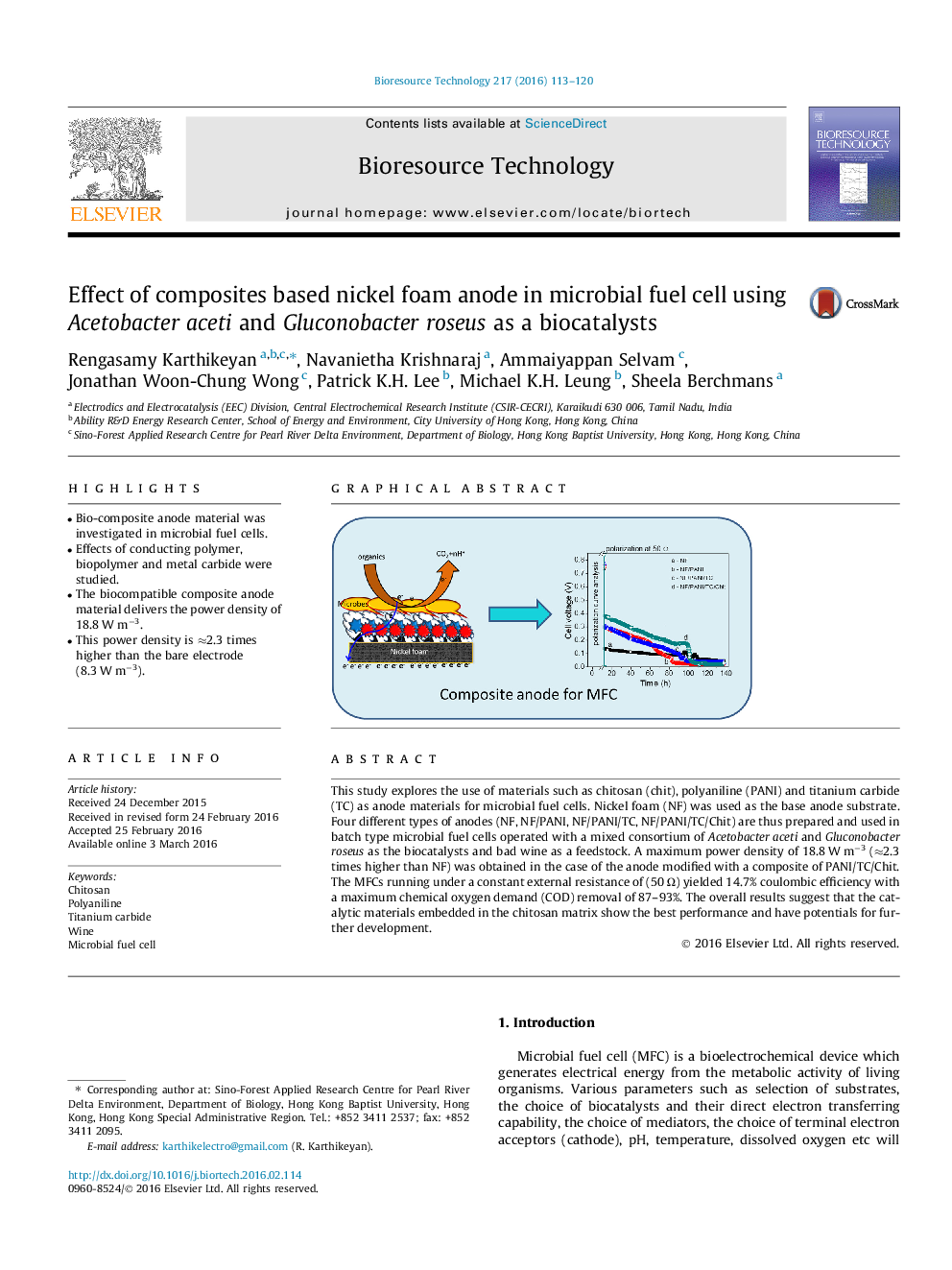| کد مقاله | کد نشریه | سال انتشار | مقاله انگلیسی | نسخه تمام متن |
|---|---|---|---|---|
| 679146 | 1459926 | 2016 | 8 صفحه PDF | دانلود رایگان |
• Bio-composite anode material was investigated in microbial fuel cells.
• Effects of conducting polymer, biopolymer and metal carbide were studied.
• The biocompatible composite anode material delivers the power density of 18.8 W m−3.
• This power density is ≈2.3 times higher than the bare electrode (8.3 W m−3).
This study explores the use of materials such as chitosan (chit), polyaniline (PANI) and titanium carbide (TC) as anode materials for microbial fuel cells. Nickel foam (NF) was used as the base anode substrate. Four different types of anodes (NF, NF/PANI, NF/PANI/TC, NF/PANI/TC/Chit) are thus prepared and used in batch type microbial fuel cells operated with a mixed consortium of Acetobacter aceti and Gluconobacter roseus as the biocatalysts and bad wine as a feedstock. A maximum power density of 18.8 W m−3 (≈2.3 times higher than NF) was obtained in the case of the anode modified with a composite of PANI/TC/Chit. The MFCs running under a constant external resistance of (50 Ω) yielded 14.7% coulombic efficiency with a maximum chemical oxygen demand (COD) removal of 87–93%. The overall results suggest that the catalytic materials embedded in the chitosan matrix show the best performance and have potentials for further development.
Figure optionsDownload as PowerPoint slide
Journal: Bioresource Technology - Volume 217, October 2016, Pages 113–120
